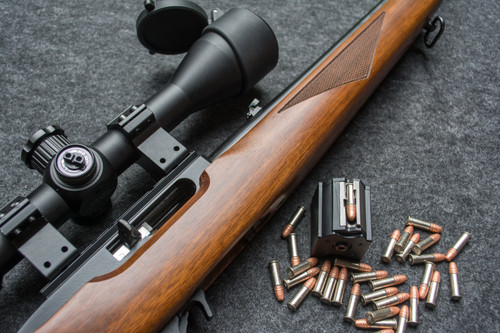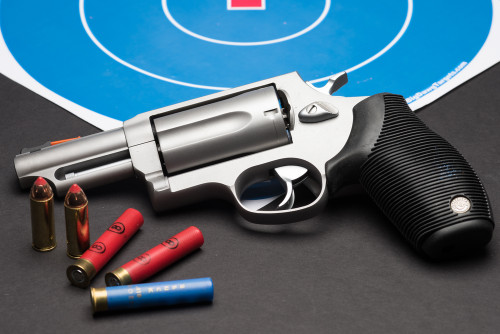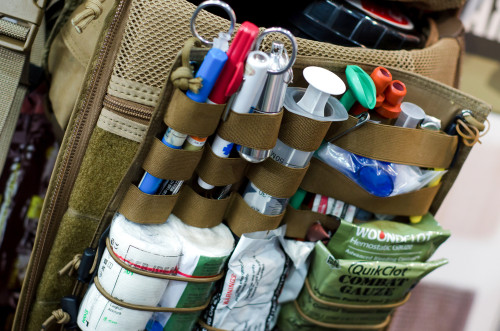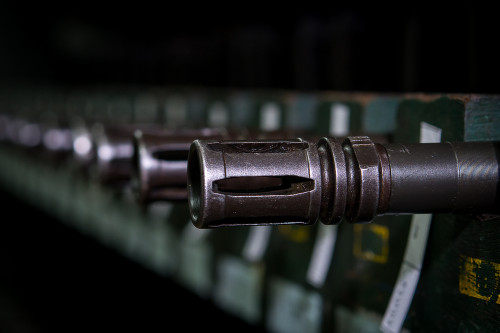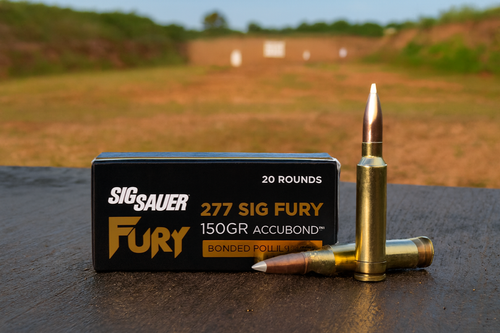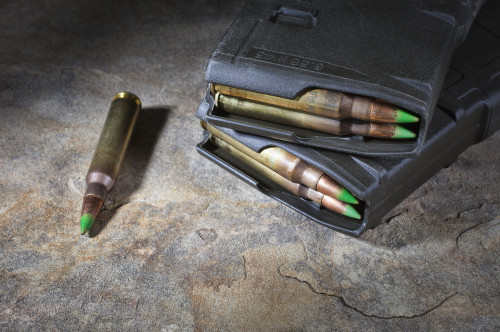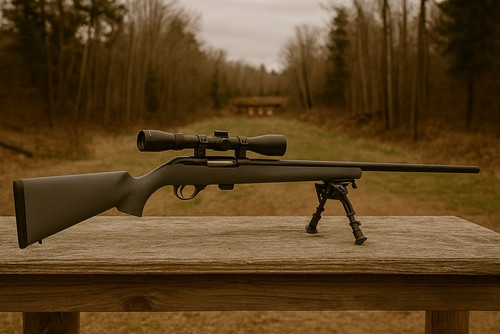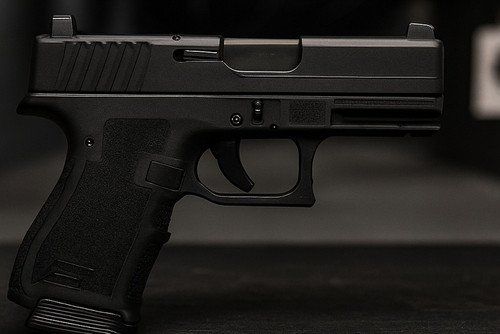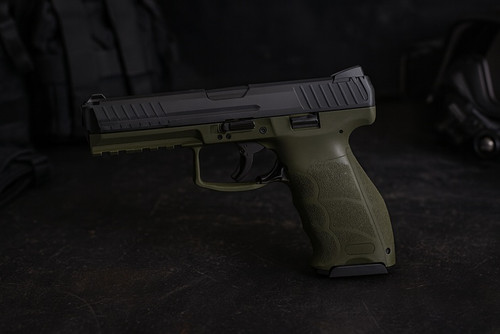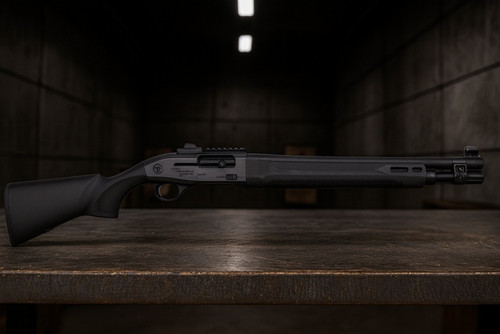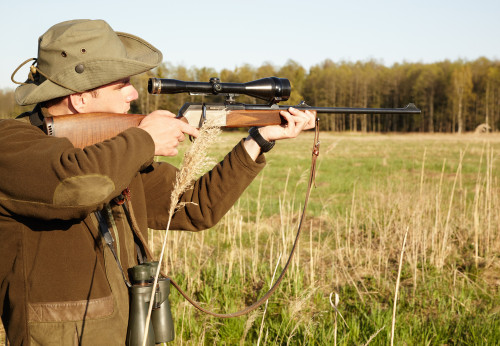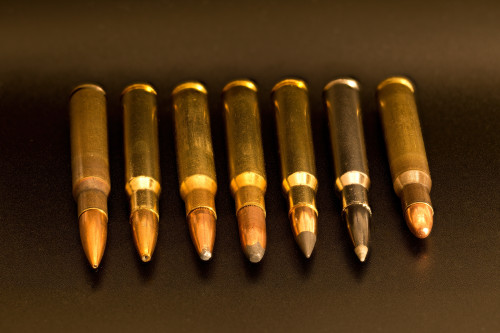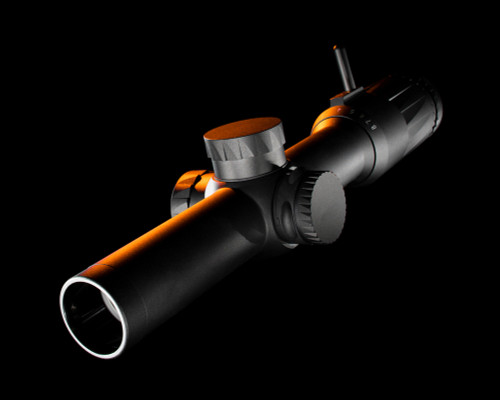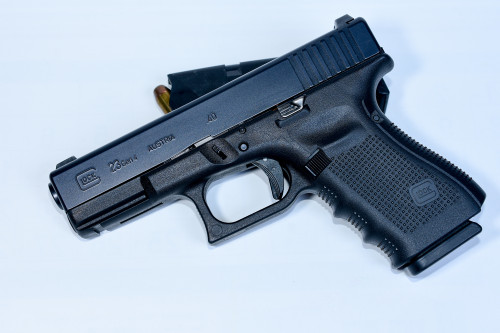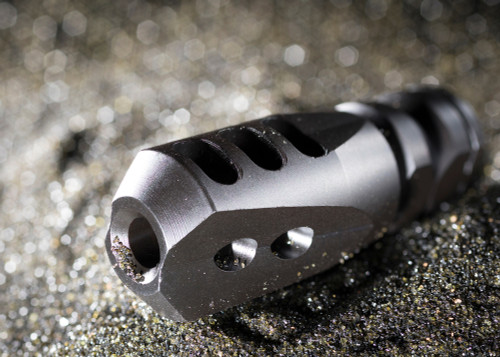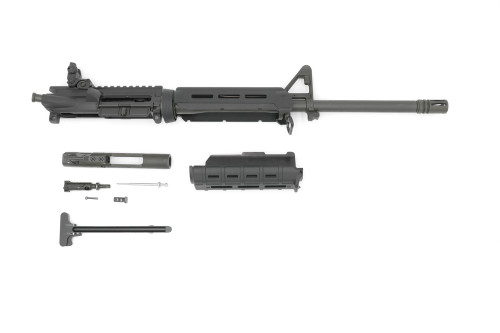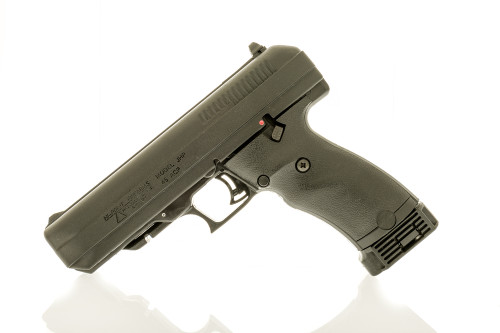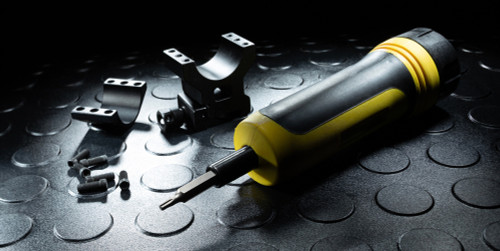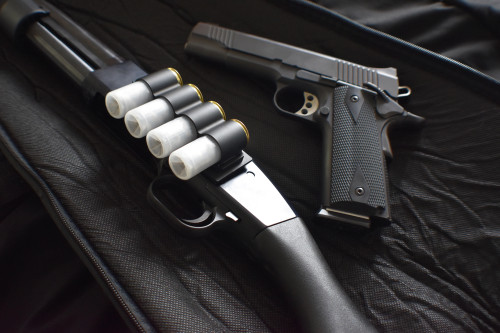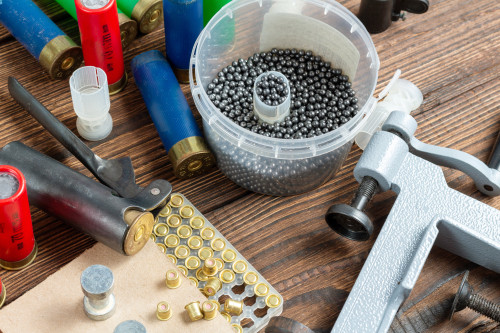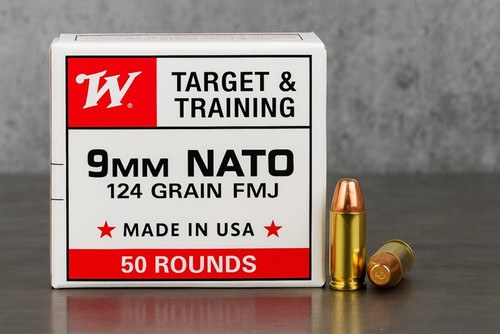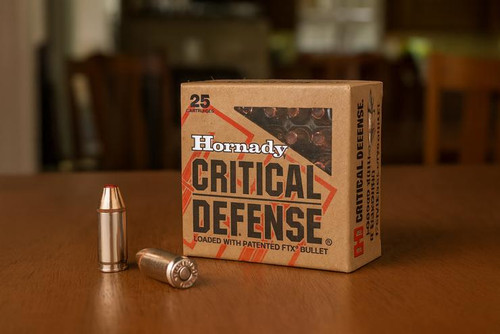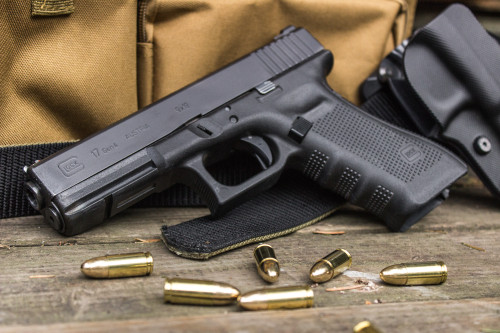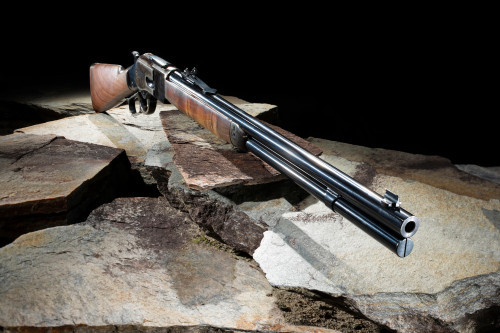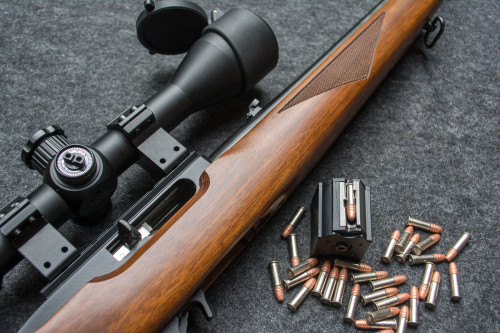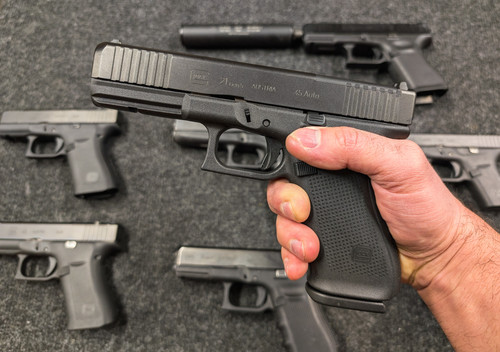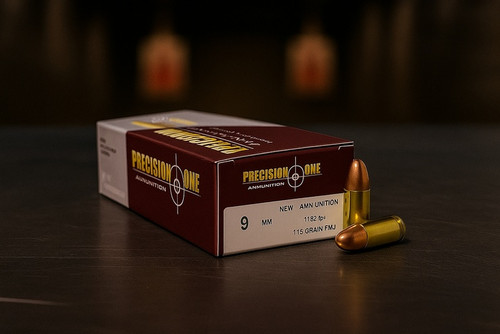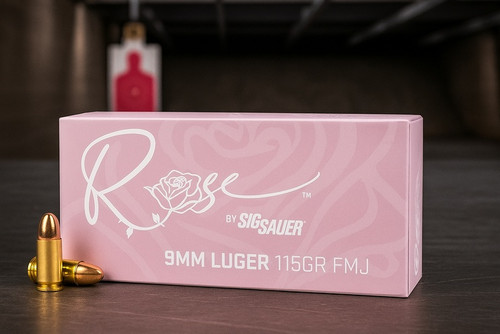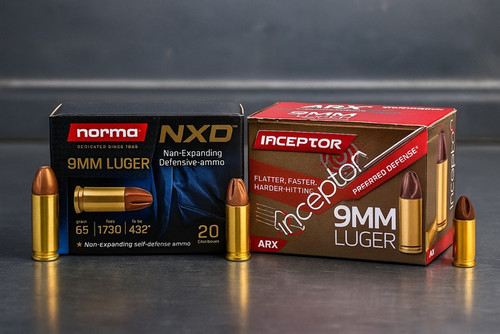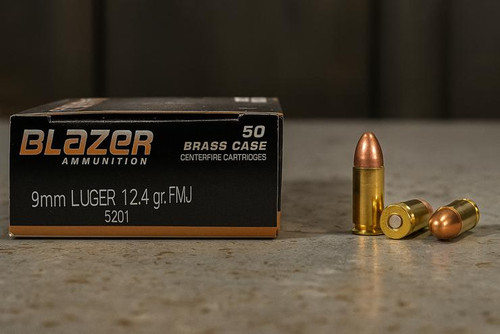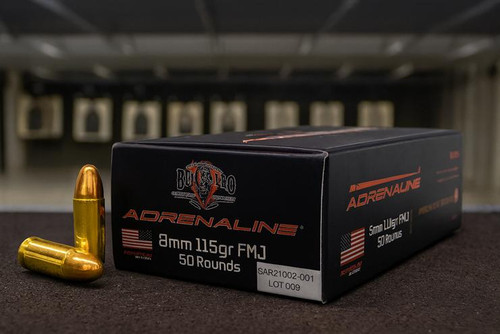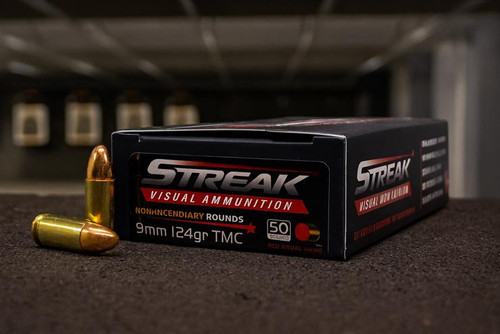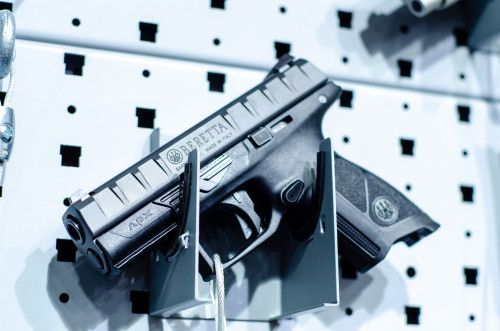The 9mm cartridge is a top choice for both recreational target shooting and serious self-defense. When choosing the right 9mm ammo, think about what you'll use it for. Ammunition suitable for casual range shooting should never be carried for concealed carry.
We've looked at testing on a variety of 9mm ammunition to find the best performers for casual shooting, precision target practice and personal safety. Our reviews rely on FBI ballistic gel tests, which use gelatin to simulate human tissue and evaluate crucial factors such as bullet penetration and expansion.
AAC 9mm Ammo (115gr & 124gr) Best Overall 9mm Range Ammo
Based on the analysis of cost and performance by our team
Based on the analysis of cost and performance by our team, AAC's 9mm full metal jacket (FMJ) rounds for high-volume range shooting as they are economically priced. The 115 and 124 grain loads operate flawlessly, making them cost-effective for training.
Pros:
- Extremely budget-friendly for plinking
- Pretty easy to find in stock
- Cycles smoothly in semi-autos and pistols
- Quality American manufacturing
Cons:
- You pay extra shipping fees buying online
- Boxes sometimes get damaged in transit
Specs:
- Bullet Type: Full metal jacket
- Casing Material: Brass
- Available Weights: 115 or 124 grain
- Muzzle Velocity: 1165 fps (115gr) or 1150 fps (124gr)
After researching extensive reviews and test data, I've found AAC rounds to be highly reliable for long days at the range. Based on analyses and feedback from various sources, including detailed reviews from our team and other expert testers, both the 115 and 124 grain versions perform smoothly, with no loading or ejecting issues.
I've been analyzing the performance of their 9mm ammo for a few years now, drawing on a comprehensive mix of reviews and data from varied sources, including tests with everything from tiny carry pistols to larger 16-inch carbine rifles. Its performance has been reported as consistently reliable based on extensive research and credible user experiences.
These full metal jacket rounds keep things clean with hardly any smoke or flash, even during quick shooting. This low flash helps you keep your eyes on target for faster follow-up shots.
Although AAC FMJ rounds are primarily designed for range and practice, they provide an economical way to extensively develop vital defensive shooting skills. As range and practice ammunition, these rounds focus on penetration rather than the expansion characteristics typical of premium defensive hollow points.
Try out both the 115 and 124 grain rounds to see which works better for you and your gun. The slightly heavier 124 grain might perform better in some smaller pistols. It’s always good to have a few different ammo types on hand, especially for training.
For those long sessions at the range, AAC FMJ ammo is a reliable and budget-friendly choice. The cost savings become significant when using hundreds of rounds compared to pricier defensive ammunition.
Blazer Brass Best Affordable Plinking 9mm Ammo
For cost-effective shooting, CCI Blazer Brass 9mm is an outstandingly affordable option. The durable brass casings resist corrosion, though it's important to note that their specific metallurgical properties can present challenges in remanufacturing, making them less ideal for multiple reloads.
Pros:
- Typically the lowest cost per round
- Tough brass casing
- Handles multiple reloads well
- Quality American manufacturing
Cons:
- Alloy unfavorable for handloads
- Rare dud round shuts down drills
Specs:
- Bullet Type: Full metal jacket
- Casing Material: Brass
- Weight: 124 grain
- Muzzle Velocity: 1,090 feet per second
Blazer Brass 9mm ammunition has consistently performed smoothly and reliably according to various shooters who have shared their experiences online. Reports indicate that many have gone through substantial quantities of it without encountering issues, especially during periods when ammo was more readily available.
It’s been great for countless training drills on regular shooting ranges and in defensive pistol classes. While we haven't personally tested each round, Blazer Brass is widely recognized as reliable budget ammunition, though some reports mention occasional dud rounds, which could be attributed to factors like light primer strikes rather than the ammunition itself.
The strong brass casings hold up well, even if you’re into reloading your spent shells. Just a heads up, though—the brass is durable and resists rust but may pose challenges for those making their own rounds, aligning with our findings on alloys that are less favorable for handloads.
After firing off hundreds of rounds at the range, CCI Blazer Brass 9mm keeps performing without costing an arm and a leg.
American Eagle Best Reliable 9mm Range Ammo
American Eagle 9mm FMJ ammo hits the sweet spot between affordability and reliability. They often offer rebates that drop their already low prices even lower. Plus, the high-quality new brass is well-regarded for frequent shooting or for those who are interested in handloading, based on widespread user reviews and detailed assessments found online.
Pros:
- Frequent money saving rebates
- Consistent round quality
- Smoothly runs in handguns
- Quality control virtually guarantees reliability
Cons:
- Costs over imported steel case
- Brass clutter from prolific shooting
Specs:
- Bullet Type: Full metal jacket
- Casing Material: Shiny new brass
- Weight: 115 grain
- Muzzle Velocity: 1,180 feet per second
Sure, it costs a bit more than some imported steel-cased ammo but the flawless performance of American Eagle FMJ makes it worth it. It uses cleaner-burning powder and softer brass, which makes shooting more pleasant for you; meanwhile, the projectile is what gets caught in the traps or backstops.. And if you don’t mind picking up a bit of extra brass, American Eagle makes your range days go without a hitch.
Based on our research and feedback, American Eagle 9mm FMJ runs so reliably it’s almost boring. And with those periodic rebates, it’s a great deal. Your guns will love this high-value bulk ammo.
Ever landed a great deal on American Eagle through a rebate? How has it performed for you over the years?
Federal HST 147 gr Best Overall Hollow Point 9mm Ammo

Federal Premium 9mm 147gr JHP
$28.99
at Pro Armory
Prices accurate at time of writing
Modern 147-grain Federal HST hollow points are designed to expand on impact, which helps prevent over penetration This makes them more effective at stopping threats quickly and safely.
These heavier 147-grain HST rounds are made to go deep enough through thick clothing and tissue to reach vital organs. They also help control the gun's recoil and reduce how much the muzzle lifts, allowing for faster follow-up shots. This is crucial during high-pressure self-defense situations where accurate shooting is key.
Pros:
- FBI ideal 12-18 inch penetration range
- Exceptional .61 inch average expansion
- Still screams along at 1,000 fps from short barrels
- Nickel cases resist corrosion
Cons:
- Slightly less available than 124 grain version
- Perceived recoil stouter than lighter loads
Specs:
- Bullet Type: Jacketed hollow point
- Casing Material: Nickel-plated brass
- Weight: 147 grain
- Muzzle Velocity: 1,000 feet per second
This ammo combines speed and bullet expansion to penetrate deeply, expand widely and release a lot of energy into the target. Tests using ballistic gel show that despite less recoil and muzzle lift, these rounds are still effective..
The Lucky Gunner’s testing, which mimics real-life, reactive self-defense scenarios, shows that Federal's 147-grain HST rounds meet strict FBI standards even when fired from compact handguns.
Based on our analysis and gathered feedback from various shooting experiences, the 147-grain 9mm loads are notable for their ability to manage recoil, thanks to the extra weight.They offer a great mix of speed, penetration and ease of shooting, making the heavy Federal HST my top pick. But their 124-grain version is also impressive...
Federal HST 124 gr Best Readily Available Hollow Point 9mm Ammo
The 124-grain Federal HST outperforms the 147-grain version in both expansion and speed. Yet, it still complies with FBI standards and has a bit less recoil than the 115-grain rounds. With its excellent balance of effectiveness, easy availability and good control, based on our analysis and experience, the 124-grain HST stands out as one of the highly recommended options among various choices.
Pros:
- Maxes out 18 inch FBI penetration
- Admirable .69 inch expansion
- Common and fairly easy to source
- Zips at 1,150 fps from short barrels
Cons:
- Recoil slightly stouter than 147 grain
- Edges out 147 grain minimally
Specs:
- Bullet Type: Jacketed hollow point
- Casing Material: Nickel-plated brass
- Weight: 124 grain
- Muzzle Velocity: 1,150 feet per second
This 124-grain option provides an excellent balance of penetration depth and velocity. Based on a comparative analysis and available data, the 124-grain rounds match the 115-grain in penetration, yet maintain a higher speed and offer more manageable recoil. The 115-grain rounds, being lighter, are faster but have a higher likelihood of deflection when encountering barriers.
Conversely, the 147-grain rounds, being the heaviest, are slower and more likely to penetrate barriers effectively. The 124-grain rounds, therefore, offer a balanced performance, falling between the two in terms of speed and penetration capabilities.
If the full power +P 147-grain rounds feel too sharp for you, the Federal Premium 124-grain HST could be a better choice. It’s easier to handle without losing any effectiveness in stopping power.
Although similar in performance to the 147-grain, the 124-grain HST is more readily available and its higher velocity makes it a versatile option for self-defense.
Speer Gold Dot Best 115 gr Hollow Point 9mm Ammo
Speer's Gold Dot 115-grain hollow points excel in short-barreled guns, offering a great mix of penetration, expansion and high speed. These light bullets are well-suited for firing from compact handguns, whether single or double stack.
Pros:
- FBI recommended 16 inch depth
- Excellent .55 inch expansion
- Hyper velocity 1210 feet per second
- Tamer recoil from diminutive guns
Cons:
- Drops energy quicker over distance
- Less energy than heavier rounds
Specs:
- Bullet Type: Jacketed hollow point
- Casing Material: Brass
- Weight: 115 grain
- Muzzle Velocity: 1,210 feet per second
Independent gel tests show the 115-grain load penetrates up to 16 inches—ideal by FBI standards. It expands to .55 inches, making a significant impact.
Even fired from small pocket pistols with 3-inch barrels, it achieves a velocity of 1210 feet per second. This is exceptionally fast for a 9mm, ensuring quick delivery to the target.
This blistering speed helps with accuracy, especially in moving situations where you need to react fast. However, the 115-grain rounds may produce more muzzle rise than higher grain ammunition, which can slightly slow follow-up shots due to increased recoil. In contrast, higher grain ammo often allows for quicker target acquisition.
Although heavier projectiles better retain their velocity and energy, lighter 115-grain rounds can achieve faster initial acceleration from short barrels due to their lower mass. However, it's important to note that lighter rounds can produce more muzzle rise than heavier rounds, especially in very compact 9mm handguns, which may impact rapid follow-up shots.
If your concealed carry weapon has a barrel shorter than 4 inches and you prefer easier handling over higher capacity, 115-grain rounds like the Gold Dot may provide faster initial acceleration from shorter barrels. However, keep in mind that lighter rounds can lead to more muzzle rise compared to heavier options, which might affect handling and follow-up accuracy in compact setups.
How We Picked the Best Ammo
Instead of just providing opinions, we based our picks on the results of FBI testing conducted by sources like Lucky Gunner.. Things like bullet design, speed and the gun’s barrel length all play a part in how a bullet performs when it hits a target.
We relied on tests from Lucky Gunner Ammo, an independent lab that uses a detailed method matching FBI standards. These tests thoroughly examine performance in real-life defense situations.
Here’s how they tested each round:
Test Setup:
- Shot from 10 feet away.
- Gel blocks were covered with four layers of denim to mimic clothing.
- They measured how deep the bullets went into the gel.
- They checked how much each bullet expanded.
- They took regular speed measurements.
- All tests used a S&W M&P9C with a 3.5-inch barrel, similar to many concealed carry guns.
What They Looked For:
Lucky Gunner compared their findings to what the FBI considers ideal for 9mm bullets:
- Penetration between 12 and 18 inches to hit vital organs without passing through.
- Bullets should expand a lot to transfer the most energy.
We heavily relied on these test results to form our recommendations. But we didn’t stop there—we also looked at price, availability and how reliable each ammo type has been.
Defensive rounds that met or exceeded the FBI’s criteria for penetration and expansion stood out. Our goal was to identify ammunition that delivers excellent performance, is readily available and is affordably priced.
Analysis and Comparison
When evaluating 9mm ammo, key performance attributes include bullet weight, velocity and cost per round.
Bullet Weight
Heavier bullets better retain velocity by resisting air resistance downrange. Lightweight loads emphasize capacity and velocity firing from tiny concealed carry handguns.
AAC full metal jacket ammo comes in both 115 grain and 124 grain options. Blazer Brass uses a sharp 124 grain profile. In premium hollow points, Federal Hydra Shok offers 147 grain and 124 grain varieties. The 115 grain Speer Gold Dot hollow points are characterized by their light weight and high velocity.
Muzzle Velocity
Faster muzzle velocity translates to flatter trajectories and more energy transferred on targets. But blistering speeds also increase felt recoil and blast for shooters.
AAC FMJ travels at 1165 fps with 115 grain bullets and 1150 fps for 124 grain. Blazer Brass pushes 124 grain rounds at a modest 1090 fps. The heavy 147 grain Federal HSTs leave at 1000 fps while 124 grain HSTs achieve 1150 fps. Finally, Speer Gold Dot's lightweight 115 grain loads rocket out at 1210 fps.
Cost Per Round
If you’re watching your budget, brass-cased ammo is great for target practice since it's cheaper, while defensive hollow points are pricier. Shooters need to balance cost with what they need the ammo for, whether it's training or self-defense.
AAC FMJ costs about 27 cents per round for both 115 and 124 grain bullets. Blazer Brass FMJ is even less expensive at 26 cents each. On the higher end, Premium Federal HST hollow points are priced between 48 and 49 cents each and Speer Gold Dot rounds start at 54 cents.
It’s smart to consider bullet weights, speeds and prices when choosing your perfect 9mm ammo. Think about what matters most to you like how much recoil you can handle, how easy it is to find the ammo and what you’ll use it for. While training ammo should be both reliable and affordable, self-defense ammo needs to consistently meet FBI standards.

Sig Sauer Elite Performance V-Crown Ammunition 9mm 115gr JHP- 50 Rounds
$39.99
at Pro Armory
Prices accurate at time of writing
Final Thoughts
Selecting the appropriate 9mm ammo involves considering its intended use, cost, availability, performance and your preferences. We’ve looked at everything from practice ammo to self-defense rounds that go beyond FBI standards in terms of performance and price. We hope our advice makes it easier for you to find the ammo that works best for you.
Frequently Asked Questions (FAQs)
What's the best 9mm ammo for self-defense?
Modern hollow points like Federal HST and Speer Gold Dot expand reliably while penetrating 12-18 inches per FBI standards. They vastly outperform ball or full metal jacket rounds.
Can you use full metal jacket ammo for self-defense?
While FMJ is fine for practice, hollow points better transfer energy to targets and limit over penetration risks. Use purpose built self-defense ammo loaded with expanding hollow point bullets.
What are the major 9mm ammo brands?
Top manufacturers include AAC, Blazer, Federal, American Eagle, Remington, Winchester and Speer. We found good options across high volume range ammo and specialty self-defense loads.
Do I need +P ammo for self-defense?
While overpressured +P ammo flies faster, most 9mm handguns easily achieve sufficient penetration and expansion without subjecting guns to accelerated wear.
What 9mm grain is best?
Heavier 147 and 124 grain bullets offer better penetration while 115 grain loads emphasize capacity and velocity. Test various weights yourself to find your preference.
How many rounds do I need for self-defense?
Carry at least one full magazine worth of hollow points for self-defense. But regular practice necessitates buying multiple boxes to become truly proficient.





